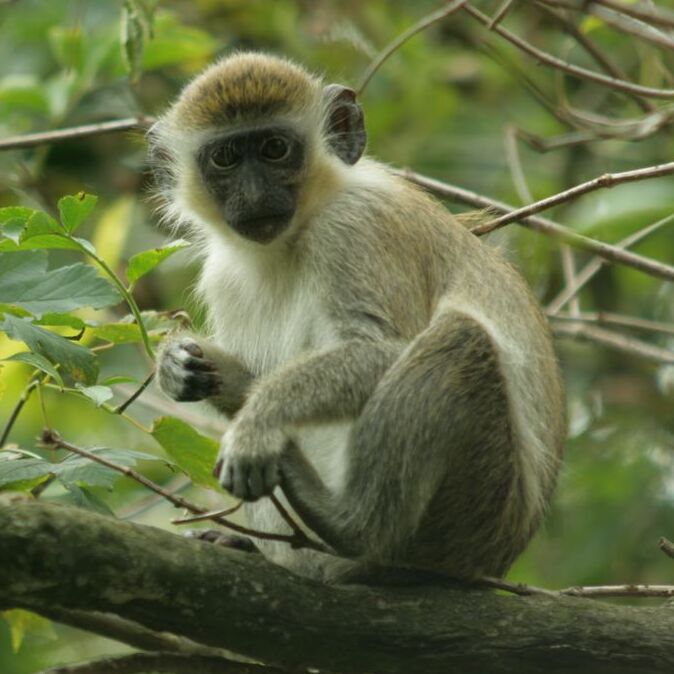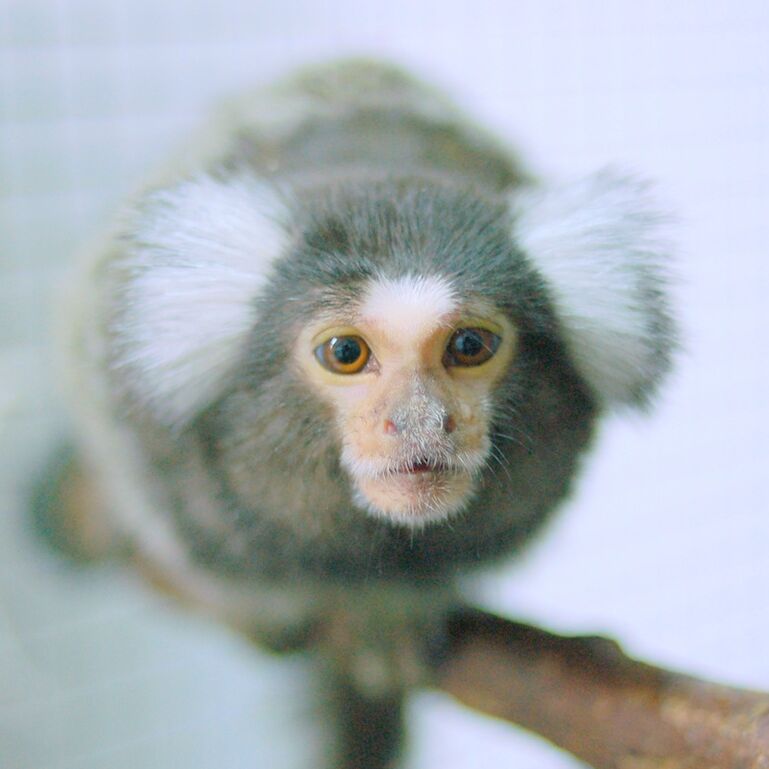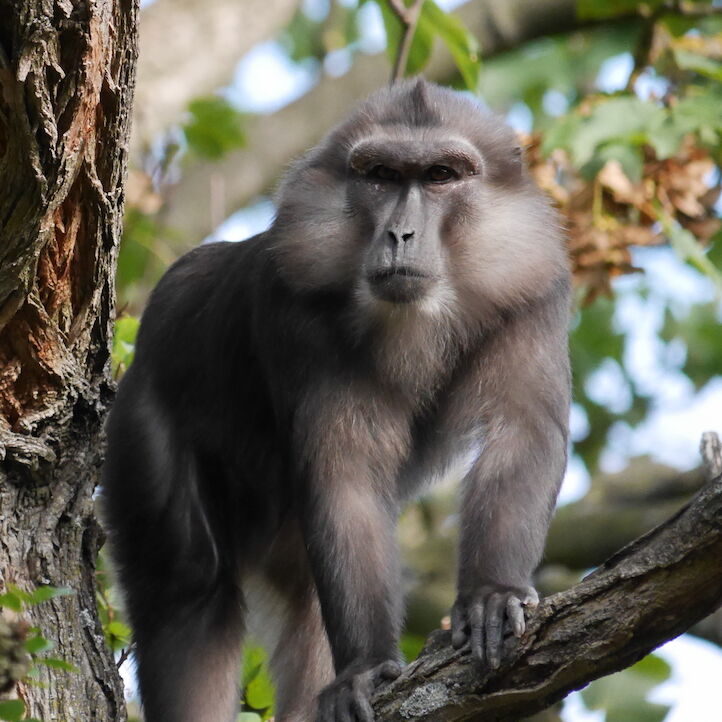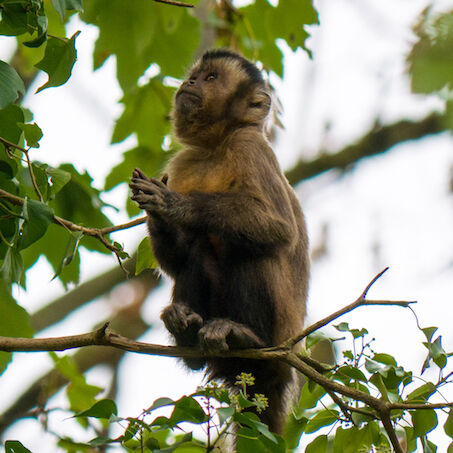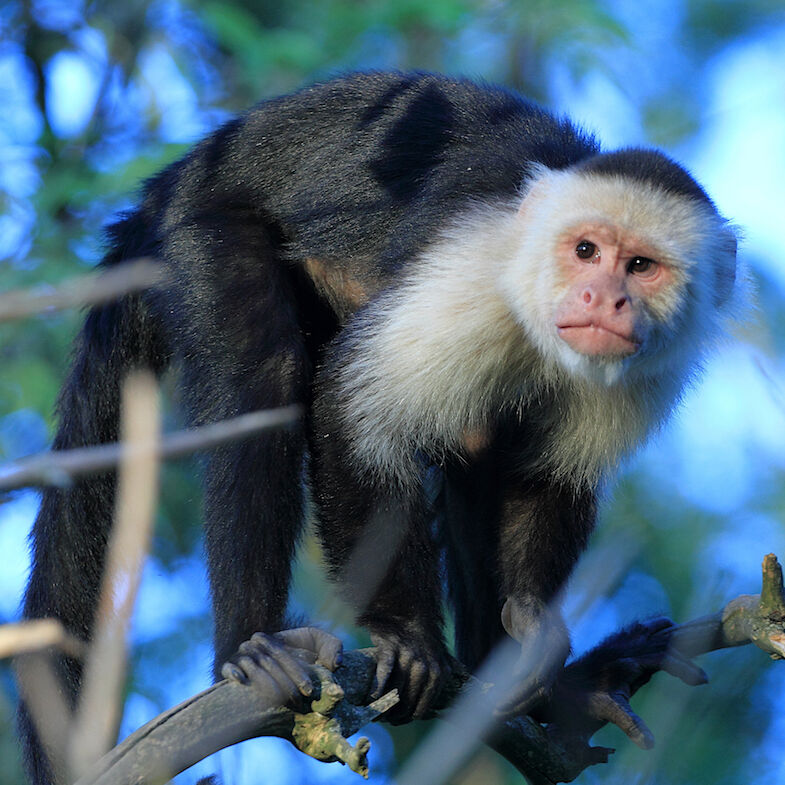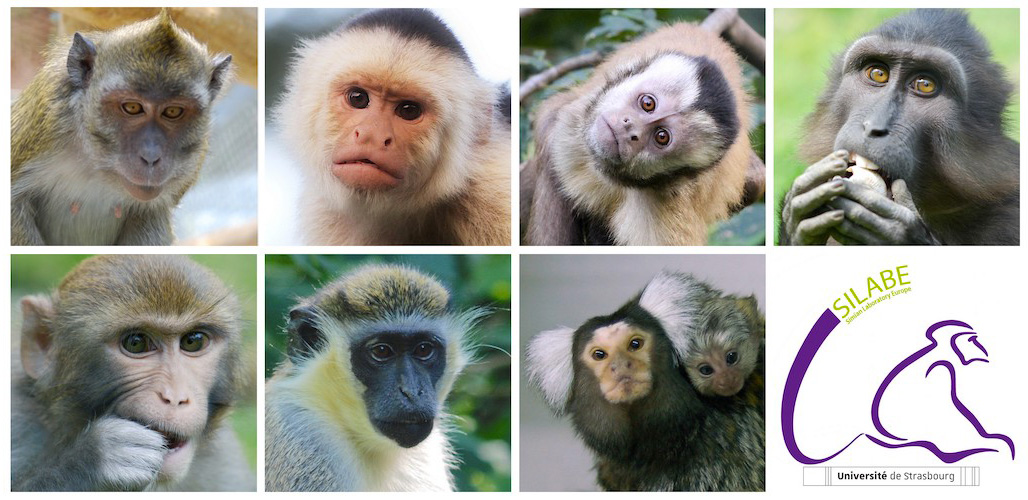Page contents
Crab-eating Macaque (Macaca fascicularis)
The Crab-eating Macaque, also known as the Long-tailed Macaque, Java Macaque or Cynomolgus Macaque is a simian of the Cercopithecidae family, native to Southeast Asia and present in Mauritius also.
Body length is between 38 and 65 cm with a tail reaching up to 50 cm long. Females weigh between 3 and 6 Kg while males weigh 5 to 9 Kg. Life expectancy is 30 years.
The Crab-eating Macaque is the most widely used non-human primate species in biomedical research. It is used in the fields of infectiology, toxicology, virology, neuroscience and the study of neurodegenerative diseases.
Rhesus Macaque (Macaca mulatta)
The Rhesus Macaque is a simian of the Cercopithecidae family, native to Asia.
Body length is between 50 and 70 cm on average. Females weigh 4 to 10 Kg while males weigh 5 to 12 Kg. Life expectancy is 30 years.
The Rhesus Macaque is one of the most widely used non-human primate species in research and owes its name to the blood group rhesus factor discovered in this animal model. This species is primarily used for the development of vaccines and treatments for human diseases as well as in the field of embryology.
Green Monkey (Chlorocebus sabaeus)
The Green Monkey, also known as the Sabaeus Monkey is a simian of the Cercopithecidae family. Native to Africa, it is also found in Barbados and other islands of the Lesser Antilles.
Body length is between 40 and 80 cm with a tail between 56 and 63 cm long. Females weigh between 3 and 4 Kg while males can reach up to 6 Kg. Life expectancy is approximately 25 years.
In biomedical research, the Green Monkey is primarily used to study HIV (Human Immunodeficiency Virus).
Common Marmoset (Callithrix jacchus)
The Common Marmoset, also known as the White-tufted Marmoset is a simian of the Callitrichidae family. This species is native to Brazil. Weighing 300g on average, body length is between 15 and 20 cm and the tail is 28cm long. Life expectancy is 12 years.
In biomedical research, the Common Marmoset is used as a model in the fields of neuroscience, neurodegenerative diseases, ophthalmology, metabolism, pharmacology and reproduction.
Species used for behavioural observations
A number of these species are part of the European Endangered Species Programme (EEP – European Endangered species Programme) which allows for optimal genetic management of captive populations. Observations carried out within the SILABE platform contribute to the conservation of these species by providing new insight into their social specificities, behaviour, biology, reproduction, etc.
Tonkean Macaque (Macaca tonkeana)
The Tonkean Macaque is a simian of the Cercopithecidae family and is endemic to Sulawesi in Indonesia. Body length is between 50 and 67 cm with a near absent tail (5 cm). Females weigh between 7 and 12 Kg while males weigh 15 to 20 Kg. Life expectancy is 30 to 35 years.
Characterised by its great social tolerance, the Tonkean Macaque is an excellent model for studying social behaviour. Its cognitive abilities are also studied in the field of behavioural neuroscience.
Tufted Capuchin (Sapajus apella)
The Tufted or Brown Capuchin is a simian of the Cebidae family, native to South America. Body length is between 35 and 49 cm with a prehensile tail measuring between 37 and 48 cm. Females weigh between 2.5 and 3 Kg while males can weigh up to 5 or 6 Kg. Life expectancy can be as long as 40 years.
The Tufted Capuchin is known for its cognitive abilities and dexterity. The study of its behaviour provides an opportunity to investigate evolutionary differences between different species of non-human primates.
White-faced Capuchin (Cebus capucinus)
The White-faced Capuchin is a simian of the Cebidae family, native to South America.
Its particularity is the presence of a 35 to 55 cm-long prehensile tail. Body length is between 33 and 45 cm and the average weight is between 2 and 3.8 Kg. Life expectancy can be as long as 45 years.
As is the case for the Tufted Capuchin, the White-faced Capuchin is known for its cognitive abilities and dexterity. This species is also of interest for behavioural studies investigating the evolutionary differences between species.



